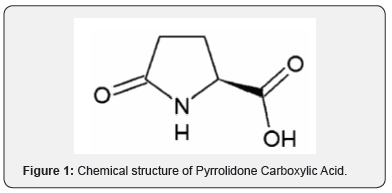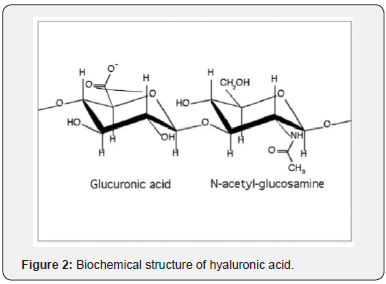OSMONAR™: A New Topical Approach For “Dry Nose”
F Baldacci, Mara Baldacci and M Bertini*
R&D Dept, Laboratori Baldacci SpA, Pisa, Italy
Submission: October 28, 2019; Published: November 4, 2019
*Corresponding author: M Bertini, R&D Dept, Laboratori Baldacci SpA, Pisa, Italy
How to cite this article: F Baldacci, Mara Baldacci, M Bertini. OSMONAR™: A New Topical Approach For “Dry Nose”. Glob J Oto, 2019; 21(1): 556055. DOI: 10.19080/GJO.2019.20.556055
Editorial
Rhinitis sicca or generally speaking “dry nose” is a frequent pathology involving many people around the world [1,2]. Even though many people suffer from this pathology, an unequivocal definition of “dry nose” is not available [1,2]. Symptoms range from a subjective feeling of a rather dry nose to visible crusting of the inner nose with a wide range of combinations in the middle [1,2]. Itching, mild burning, nasal obstruction, unpleasant smell, epistaxis and diminished sense of smell are often reported to define this medical problem [2]. The diagnosis of rhinitis sicca or dry nose is mainly based on patient’s history, on the inspection of the external and inner nose, on the endoscopy of the nasal cavity, of the paranasal sinuses and of the nasopharinx with CT [1].
The treatment of “dry nose” involves mainly elimination of promoting factors such as air conditioning or indoor heating that can lower the humidity levels which in turns can cause dryness, prolonged use of medications such as antihistamines, sympathicomimetics, bronchodilatators and atropine that can cause the nasal passage to become dry [1,2]. Also, Sjogren’s Syndrome, that is a chronic autoimmune condition, is characterized by dryness of the mucous membranes of the throat, mouth, vagin and nose [1,2]. We have also to remember that postmenopausal women have a dryness of the mucosa membrane of the body that can lead to “dry nose” [1,2].
If the symptomatology persists avoiding promoting factor, we can use topical moisturizing agents for nasal mucosa, enough daily drinking amount, cleansing of the crust, care of the mucosa and inhibitions of possible infections and, in some cases, elimination of overlarge endonasal space [1]. Humidification of the nose, especially for mucus, seems to be the main treatment for “dry nose” not only to relief subjective symptomatology but also to restore nasal mucosa integrity [1,2]. Pyrrolidone Carboxylic Acid [PCA](Figure 1) also Known as Pyroglutamic Acid or 5-oxoproline pyrrolidone-2-carboxilic acid was first discovered by Hitinger in 1882: this scientist found that when glutamate was healed at 180°C it was converted in PCA by losing a molecule of water [3]. It was Alton Meister in 1970s that deeply studied PCA integrated its synthesis and degradation into the cycle of synthesis and degradation of glutathione, the Gamma-Glutamyl cycle [4]. PCA is a naturally occurring component of mammalian tissue [5] and exists as free metabolite in living cells [3]. PCA is the cyclic lactam of the glutamyc acid [3] and it was considered a physiologically safe compound for mammalians [3-7].

Recently PCA has shown “OSMOPROTECTANT activities” [3]: in methylobacter alkaliphilium PCA was found to accumulate in response to salt stress and function as osmoprotectant along with ectoin and sucrose [4]. High water-binding capacity and the relatively metabolic inert nature makes PCA a compatible solute and osmoprotectant [3]. In mammals, the level of PCA is comparatively high in skin and it appears that it might function as a natural moisturizing to trap water [3]. De novo synthesis of PCA in response to osmotic stress occurs by a costitutive enzyme glutamine synthetase, that cyclizes the glutamate in PCA in the absence of ammonia [3].
Concluding, osmotic stress in mammalian living cells could be counteract by “the naturally-occurring PCA” and its use as “osmoprotectant” to trap water has been proposed to reverse “cellular dryness” [3]. Interstingly, PCA-local activity has previously demostrated to be “a long-lasting action” both in the skin [8] and in the nasal mucosa [9] making PCA an intriguing new substance for topical application to treat mucosal dryness for long time through a single topical application. Hyaluronic Acid [HA] is a high-molecular weight endogenous non sulphated glycosaminoglycan that acts as a component of man extracellular matrices and organic fluids [10,11].
It is a hygroscopic macromolecule formed by the polymerization of glucuronic acid and N-acetylglucosamine disaccharide [11] (Figure 2). HA can be found in connective tissue, respiratory ephitelia, nasal and tracheobronchial mucosa airway secretions and gland serum cells [10]. HA plays a determinant role in regulating vascular tone and mucosal gland secretion [12] and acts as lubricant of airway surfaces, it is involved in tissue healing and remodelling and modulates inflammatory responses [13]. HA is a hygroscopic macromolecule and its solutions are highly osmotic [11]: this property enables to control of tissue hydratation [11].

Recently the synergistic combination between PCA and HA has been patented and has demostrated to significantly increased the osmoprotection of the mucosa [14]. The combination of PCA, an osmoprotective ingredient and HA as a mucohadesive, hygroscopic and viscosifying substance, when topically applied, has demonstrated to significantly increased mucosal rehydration, to shortner the time of onset to treat “mucosal dryness” and to own a long-lasting activity when confronte with HA alone [14].
So that PCA and HA, together with all the other substances included in OSMONAR™ gel composition [Ethylhexilglycerine, Sodium Polyacrylate, Dymethicone, Silicone, Polydimethylxiloxane, Triethanolamine, Phenosxyethanol, Eucaliptol, Mint Flavour and Purified water], makes this medical device a new interesting option to treat “dry-nose”. Since humidity and rehydratation are “the main goal” to treat “dry nose” it seems to be useful to add to the well-Known HA topical activities the sinergistic effects of PCA that allows to the new patented marketing medical device OSMONAR™, a gel for nasal lubrification, to quickly increase nasal mucosa rehydratation with a long-lasting activities.
This last peculiarity could be useful for patient management because a topical application of OSMONAR™ could be effective for long time allowing to the patient to control “dry nose symptoms” for long time after single application. Concluding, nasal application of a gel containing OSMONAR™ could represent a new and effective treatment for “dry nose” or “rhinitis sicca”; the high safety profile of the single components added in this new formulation could increase patient’s compliance to the treatment allowing a quickly restoring of the nasal mucosa together with a rapid control of the “dry-nose” – related-symptoms.
References
- Hildebrand T, et al. (2011) Rhinitis sicca, dry nose and atrophic rhinitis: a review of the literature. Eur Arch Otorhinolaryngol 286 (1): 17-26.
- Sonnemann U, Olaf Scherner, Nina Werkhäuser (2014) Treatment of rhinitis sicca anterior with ectoine containing nasal spray. J Allergy.
- Kumar A, Anand K Bachhawat (2012) Pyroglutamic acid: throwing light on a lightly studied metabolite. Curr Sci 102(2): 288-297.
- F Alan Andersen (1999) Final safety assessment for PCA and sodium PCA. Int J Toxicol 18 (2): 25-34.
- Opinion of the Scientific Panel on Food Additives, Flavourings, Processing Aids and Materials in Contact with Food on a request from the Commission related to: Calcium, iron, magnesium, potassium and zinc L-pidolate as sources for calcium, iron, magnesium, potassium and zinc added for nutritional purposes to food supplements and to food intended for particular nutritional uses. The EFSA J 2007, 495-503, 1-10.
- Wolfersberger MG, Tabachnick J, Finkelstein BS, Levin M (1973) L-pyrrolidone carboxylic acid content in mammalian epidermis and other tissues. J Invest Dermatol 60(5): 278-281.
- Cosmetic Ingredient Review: Safety assessment of PCA and its salts as used in cosmetics. 2014.
- Turner RB, Biedermann KA, Morgan JM, Keswick B, Ertel KD (2004) Efficacy of organic acids in hand cleansers for prevention of rhinovirus infections. Antimicrobial Agents and Chemother 48(7):2595-2598.
- Rennie P, Bowtell P, Hull D, Charbonneau D, Lambkin Williams R, et al. (2007) Low pH gel intranasal sprays inactivate influenza viruses in vitro and protect ferrets against influenza infection. Resp Res 8: 38.
- Pignataro L, Marchisio P, Ibba T, Torretta S, et al. (2018) Topically administered hyaluronic acid in the upper airway: a narrative review. Int J Immunopathol Pharmacol 32: 1-7.
- Kapoor P, Sachdeva S, Sachdeva S, et al. (2011) Topical hyaluronic acid in the management of oral ulcers. Indian J Dermatol 56(3):300-302.
- Gelardi M, Guglielmi AV, De Candia N, Maffezzoni E, Berardi P, et al. (2013) Effect of sodium hyaluronate on mucociliary clearance after functional endoscopic sinus surgery. European Annals of Allergy and Clinical Immunology 45: 103–108.
- Macchi A, Terranova P, Digilio E, Castelnuovo P (2013) Hyaluronan plus saline nasal washes in the treatment of rhino-sinusal symptoms in patients undergoing functional endoscopic sinus surgery for rhino-sinusal remodeling. Int J Immunopathol Pharmacol 26:137–145.
- Tampucci S, Monti D, Burgalassi S, Terreni E, Zucchetti E (2018) Effect of 5-oxo-2-pyrrolidinecarboxylic acid (PCA) as a new topically applied agent for dry eye syndrome treatment. Pharmaceutics 10 (3).





























